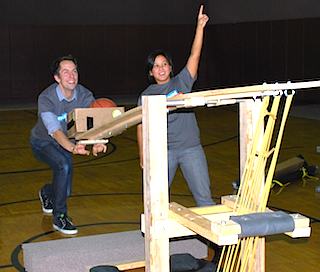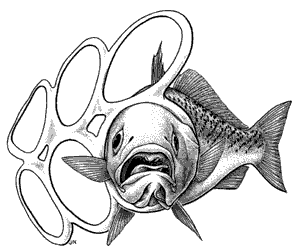 How many kids (not to mention adults) know how a teeter-totter works? How about a zip line? For all the technology that surrounds us in our daily lives, most of us are unclear on even the most basic of engineering concepts.
How many kids (not to mention adults) know how a teeter-totter works? How about a zip line? For all the technology that surrounds us in our daily lives, most of us are unclear on even the most basic of engineering concepts.
Enter the WGBH Boston TV show, Design Squad Nation, where two young, high-energy engineers work with kids around the world to “make their wishes come true through engineering.”
From a skate park at the White Mountain Apache Reservation in Arizona to a playground in rural Nicaragua, Design Squad gets kids involved in hands-on design and engineering and also inspires at-home viewers to launch their own projects.
Design Squad is more than a TV show—it’s also a collection of hands-on engineering activities, many of which are now available at howtosmile.org. “Being an engineer doesn't mean being a 'nerd' with a pocket protector,” the Design Squad web site asserts. “It means being a creative problem solver, an innovative thinker and a team player.”
Howtosmile.org is thrilled to be teaming up with WGBH and Design Squad. We asked Design Squad Outreach Manager Susan Buckey to give us her perspective on the collaboration.
SMILE: What makes SMILE and WGBH/Design Squad a good match?
Susan Buckey: Design Squad Nation is a great fit for the SMILE crowd! We write our activities so they are accessible to engineers and non-engineers alike. The activities are also easy-to-implement because we test them thoroughly to make sure that they are both challenging and rewarding for kids to work on.
What's your favorite Design Squad episode?
Susan: My favorite episodes are ones where hosts Adam and Judy (pictured above) or the kids build something that I could imagine building myself—like the episode called “One Giant Leap” where they build a glider that takes a running leap off a pier or “Cardboard Furniture” where they design cardboard furniture for IKEA.

What's your favorite hands-on Design Squad activity?
Susan: Harmless Holder is one of my favorites because it’s one of our “green” activities. Plastic six-pack holders are dangerous to marine life so we ask kids to design a safer, more environmentally friendly way to carry six cans.
What, in your opinion, makes for a good hands-on activity?
Susan: Great activities have to be fun and challenging, but still doable. The best activities have a million possible solutions—it all depends upon the creativity of the designer. At WGBH we have other criteria as well. For example, the materials need to be accessible, and relatively inexpensive. We share our guides with all sorts of youth organizations and we can’t assume that they have unlimited budgets.
What's your background? How did you get into science education?
Susan: I taught fourth grade before working at WGBH, so I know kids, but it wasn’t until I started working here 10 years ago that I was able to focus solely on science. I’ve always loved STEM subjects, been interested in building things, and been curious about how things work. Working on projects like ZOOM, FETCH!, and Design Squad Nation, I could get messy, play with materials, and come up with STEM activities that kids could enjoy and learn from. Now it’s my passion to inspire kids to see themselves as scientists and engineers!
